How Integrating Drawing Management with ERP Boosts Efficiency

Table of Contents

Why drawing management with ERP matters
Drawing management involves tracking, storing, distributing, and revising technical drawings and engineering documents. An ERP system integrates business data and processes across departments like finance, sales, and operations. Integrating drawing management with ERP provides significant benefits for manufacturing and engineering companies:
- Improved data accuracy and efficiency by eliminating redundant data entry across disconnected systems. All stakeholders access a single source of truth.
- Enhanced collaboration and communication between teams. Engineering changes automatically notify production, purchasing, etc.
- Faster design change implementation since the ERP automatically updates when engineering drawings change.
- Better version control and document management with centralized storage and automated workflows.
- Increased visibility into document status, approvals, revisions for auditing and compliance.
- Reduced costs and manual errors by eliminating paper drawings and streamlining workflows.
- Accelerated new product introduction by linking engineering BOMs and drawings directly to ERP item masters and production orders.
In summary, connecting drawing management to ERP improves productivity, quality, and new product speed by optimizing engineering and manufacturing processes on a shared platform.
Challenges of Manual Drawing Management
Manually managing engineering drawings and documents presents several challenges:
- Version control difficulties – Without a centralized system, different departments may end up working from outdated revisions of drawings. Manually tracking and distributing the latest versions is tedious and error-prone.
- Data silos – Drawings and documents are often stored in multiple locations and formats across the organization. This fragmentation makes it difficult to find information and maintain consistency.
- Tedious manual processes – Basic document management tasks like filing, retrieving, distributing, and redlining drawings become time-consuming chores. Workflows rely heavily on email, shared drives, and paper documents.
The inefficiencies of manual drawing management lead to delays, mistakes, and rework that hinder engineering productivity. Organizations need an automated system to streamline these processes.
Automated Drawing Management Systems
Automated drawing management systems provide centralized document storage, workflow automation, and version control capabilities to streamline engineering design and documentation processes.
- Centralized document storage – All drawings, models, specifications, and supporting documents are stored in a central repository that can be accessed by authorized users across the organization. This eliminates the need to track down files over email, shared drives, etc.
- Workflow automation – The system can automate routing of drawings and documents through review, approval, release, and change order workflows. Email alerts, tasks, and dashboards streamline collaboration between engineers, managers, and other stakeholders.
- Version control – Every iteration of a drawing or document is saved, with details on changes made, approver comments, and other metadata. This maintains an audit trail and allows easy roll-back to prior versions. Automated revision numbering also tracks the current approved version.
Integrating Drawing Management with ERP
Integrating drawing management with ERP systems provides numerous benefits for manufacturing organizations. By connecting these two critical systems, companies can create a single source of truth for product data, streamline business processes, and improve data access and reporting.
Single Source of Truth
When drawing management is integrated with ERP, all product data resides in a central location. Drawings, bill of materials, engineering changes, and other technical documents are synchronized and made available across departments. This eliminates data silos, reduces errors from working with outdated information, and provides all teams visibility into the latest product designs.
Streamlined Business Processes
An integrated system automates workflows and information sharing between engineering, manufacturing, quality, and other groups. For example, when an engineering change order is approved in the drawing management system, the ERP automatically retrieves the updated bill of materials. Or when production orders are created in ERP, the latest drawings are instantly available to the shop floor. This streamlines processes and improves efficiency.
Improved Data Access and Reporting
With a unified system, users can easily access drawings, specifications, and related information directly from ERP screens and reports. Management can generate integrated reports on product costs, design changes, inventory, and other metrics to make data-driven decisions. Drawing management integration makes technical and business data more usable across the organization.
Implementation Considerations
Implementing an integrated ERP and drawing management system requires careful planning and execution. Here are some key factors to consider:
Data Migration Planning
- Develop a data migration strategy. Identify what existing drawing data needs to be migrated to the new system.
- Assess data quality and cleanse data if needed before migrating. Poor quality data going into the new system will create ongoing issues.
- Validate migrated data to ensure accuracy and completeness. Spot check critical drawings.
User Training
- Provide comprehensive training on the new integrated system. Users need to learn new workflows and how to leverage the integration.
- Training should cover day-to-day system usage as well as troubleshooting issues. Allow hands-on practice time.
- Follow up after go-live to offer refresher training and support as users gain experience.
Change Management
- Get executive sponsorship and have project leaders convey the benefits of the integrated solution.
- Involve key users early in the process to gain buy-in. They can become champions.
- Develop a clear rollout plan and timeline. Communicate frequently leading up to go-live.
- Have on-site support during the transition period to aid adoption and answer user questions.
- Measure usage metrics and seek feedback to identify areas for improvement.
Bridging the Gap Between Drawings and ERP with CADDi Drawer
CADDi Drawer is a powerful solution that enables tight integration between drawing management and ERP systems. It uses advanced technologies to digitize drawings, extract key information, and seamlessly connect that data to the ERP. Here’s how CADDi Drawer facilitates this integration:
Auto Scanning of PDF Drawings
CADDi Drawer automatically extracts all relevant data from drawings, including dimensions, text, and shapes. It can even convert handwritten drawings into a searchable, comparable format. This digitization allows drawing information to flow into the ERP without manual data entry.
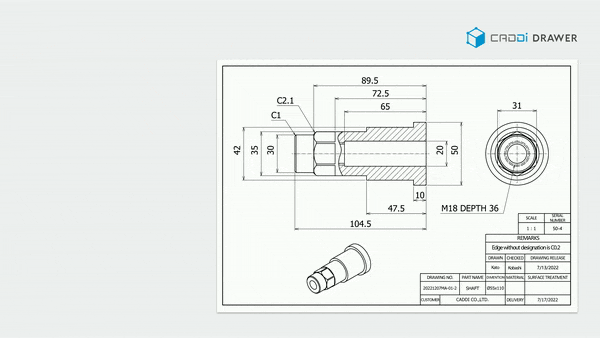
Connecting Quotation and Supply Chain Data
The solution enables uploading CSV files to associate all pertinent information with the corresponding drawings, such as cost, quantity, supplier details, sales price, and cost breakdown. CADDi Drawer can also automatically link ERP data, CAM, CAD, quality reports, spec sheets and more to the drawing record. This provides a comprehensive view of product information.

Intelligent Search Capabilities
CADDi Drawer offers multiple ways to quickly find the right drawing:
- Keyword search across the entire drawing archive, including material, size, designer name, part name, notes, etc.
- Patented similarity search that identifies part shapes to find similar drawings, even from handwritten legacy documents.
- Image search where you can upload a photo or sketch and find visually similar drawings in the system. These search functions allow users to easily surface relevant drawings from within the ERP interface.
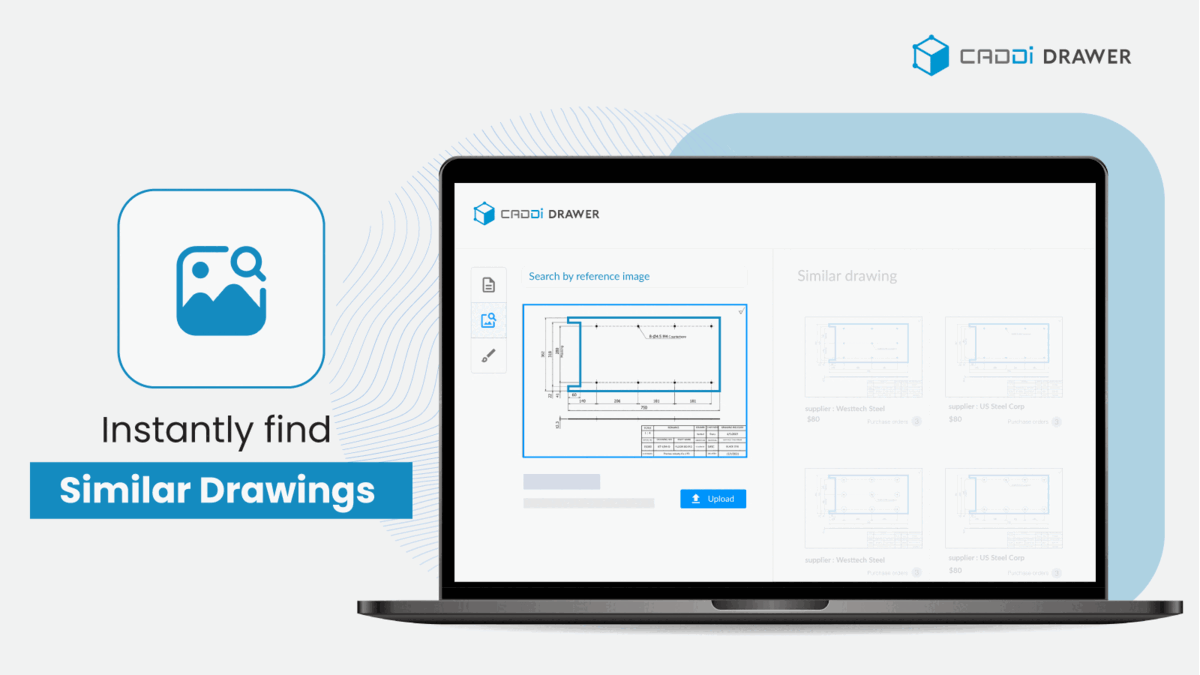
Version Compare and Data Export
The software can highlight the differences between two similar drawings or revisions with a single click. This helps users quickly identify changes between versions.
Finally, it allows downloading comprehensive drawing data, along with associated supplier information, prices, tags, etc. into a CSV file with one click. This supports further analysis and reporting in the ERP system.
By leveraging CADDi Drawer’s capabilities, organizations can achieve a tight, automated integration between their drawing management and ERP systems. This enhances the benefits of integration, like streamlined processes, improved data accuracy, and better visibility, ultimately resulting in increased efficiency and reduced costs.
Why drawing management with ERP matters
Drawing management involves tracking, storing, distributing, and revising technical drawings and engineering documents. An ERP system integrates business data and processes across departments like finance, sales, and operations. Integrating drawing management with ERP provides significant benefits for manufacturing and engineering companies:
- Improved data accuracy and efficiency by eliminating redundant data entry across disconnected systems. All stakeholders access a single source of truth.
- Enhanced collaboration and communication between teams. Engineering changes automatically notify production, purchasing, etc.
- Faster design change implementation since the ERP automatically updates when engineering drawings change.
- Better version control and document management with centralized storage and automated workflows.
- Increased visibility into document status, approvals, revisions for auditing and compliance.
- Reduced costs and manual errors by eliminating paper drawings and streamlining workflows.
- Accelerated new product introduction by linking engineering BOMs and drawings directly to ERP item masters and production orders.
In summary, connecting drawing management to ERP improves productivity, quality, and new product speed by optimizing engineering and manufacturing processes on a shared platform.
Challenges of Manual Drawing Management
Manually managing engineering drawings and documents presents several challenges:
- Version control difficulties – Without a centralized system, different departments may end up working from outdated revisions of drawings. Manually tracking and distributing the latest versions is tedious and error-prone.
- Data silos – Drawings and documents are often stored in multiple locations and formats across the organization. This fragmentation makes it difficult to find information and maintain consistency.
- Tedious manual processes – Basic document management tasks like filing, retrieving, distributing, and redlining drawings become time-consuming chores. Workflows rely heavily on email, shared drives, and paper documents.
The inefficiencies of manual drawing management lead to delays, mistakes, and rework that hinder engineering productivity. Organizations need an automated system to streamline these processes.
Automated Drawing Management Systems
Automated drawing management systems provide centralized document storage, workflow automation, and version control capabilities to streamline engineering design and documentation processes.
- Centralized document storage – All drawings, models, specifications, and supporting documents are stored in a central repository that can be accessed by authorized users across the organization. This eliminates the need to track down files over email, shared drives, etc.
- Workflow automation – The system can automate routing of drawings and documents through review, approval, release, and change order workflows. Email alerts, tasks, and dashboards streamline collaboration between engineers, managers, and other stakeholders.
- Version control – Every iteration of a drawing or document is saved, with details on changes made, approver comments, and other metadata. This maintains an audit trail and allows easy roll-back to prior versions. Automated revision numbering also tracks the current approved version.
Integrating Drawing Management with ERP
Integrating drawing management with ERP systems provides numerous benefits for manufacturing organizations. By connecting these two critical systems, companies can create a single source of truth for product data, streamline business processes, and improve data access and reporting.
Single Source of Truth
When drawing management is integrated with ERP, all product data resides in a central location. Drawings, bill of materials, engineering changes, and other technical documents are synchronized and made available across departments. This eliminates data silos, reduces errors from working with outdated information, and provides all teams visibility into the latest product designs.
Streamlined Business Processes
An integrated system automates workflows and information sharing between engineering, manufacturing, quality, and other groups. For example, when an engineering change order is approved in the drawing management system, the ERP automatically retrieves the updated bill of materials. Or when production orders are created in ERP, the latest drawings are instantly available to the shop floor. This streamlines processes and improves efficiency.
Improved Data Access and Reporting
With a unified system, users can easily access drawings, specifications, and related information directly from ERP screens and reports. Management can generate integrated reports on product costs, design changes, inventory, and other metrics to make data-driven decisions. Drawing management integration makes technical and business data more usable across the organization.
Implementation Considerations
Implementing an integrated ERP and drawing management system requires careful planning and execution. Here are some key factors to consider:
Data Migration Planning
- Develop a data migration strategy. Identify what existing drawing data needs to be migrated to the new system.
- Assess data quality and cleanse data if needed before migrating. Poor quality data going into the new system will create ongoing issues.
- Validate migrated data to ensure accuracy and completeness. Spot check critical drawings.
User Training
- Provide comprehensive training on the new integrated system. Users need to learn new workflows and how to leverage the integration.
- Training should cover day-to-day system usage as well as troubleshooting issues. Allow hands-on practice time.
- Follow up after go-live to offer refresher training and support as users gain experience.
Change Management
- Get executive sponsorship and have project leaders convey the benefits of the integrated solution.
- Involve key users early in the process to gain buy-in. They can become champions.
- Develop a clear rollout plan and timeline. Communicate frequently leading up to go-live.
- Have on-site support during the transition period to aid adoption and answer user questions.
- Measure usage metrics and seek feedback to identify areas for improvement.
Bridging the Gap Between Drawings and ERP with CADDi Drawer
CADDi Drawer is a powerful solution that enables tight integration between drawing management and ERP systems. It uses advanced technologies to digitize drawings, extract key information, and seamlessly connect that data to the ERP. Here’s how CADDi Drawer facilitates this integration:
Auto Scanning of PDF Drawings
CADDi Drawer automatically extracts all relevant data from drawings, including dimensions, text, and shapes. It can even convert handwritten drawings into a searchable, comparable format. This digitization allows drawing information to flow into the ERP without manual data entry.

Connecting Quotation and Supply Chain Data
The solution enables uploading CSV files to associate all pertinent information with the corresponding drawings, such as cost, quantity, supplier details, sales price, and cost breakdown. CADDi Drawer can also automatically link ERP data, CAM, CAD, quality reports, spec sheets and more to the drawing record. This provides a comprehensive view of product information.

Intelligent Search Capabilities
CADDi Drawer offers multiple ways to quickly find the right drawing:
- Keyword search across the entire drawing archive, including material, size, designer name, part name, notes, etc.
- Patented similarity search that identifies part shapes to find similar drawings, even from handwritten legacy documents.
- Image search where you can upload a photo or sketch and find visually similar drawings in the system. These search functions allow users to easily surface relevant drawings from within the ERP interface.

Version Compare and Data Export
The software can highlight the differences between two similar drawings or revisions with a single click. This helps users quickly identify changes between versions.
Finally, it allows downloading comprehensive drawing data, along with associated supplier information, prices, tags, etc. into a CSV file with one click. This supports further analysis and reporting in the ERP system.
By leveraging CADDi Drawer’s capabilities, organizations can achieve a tight, automated integration between their drawing management and ERP systems. This enhances the benefits of integration, like streamlined processes, improved data accuracy, and better visibility, ultimately resulting in increased efficiency and reduced costs.
Ready to see CADDi Drawer in action? Get a personalized demo.
Subscribe to our Blog!
Related Resources
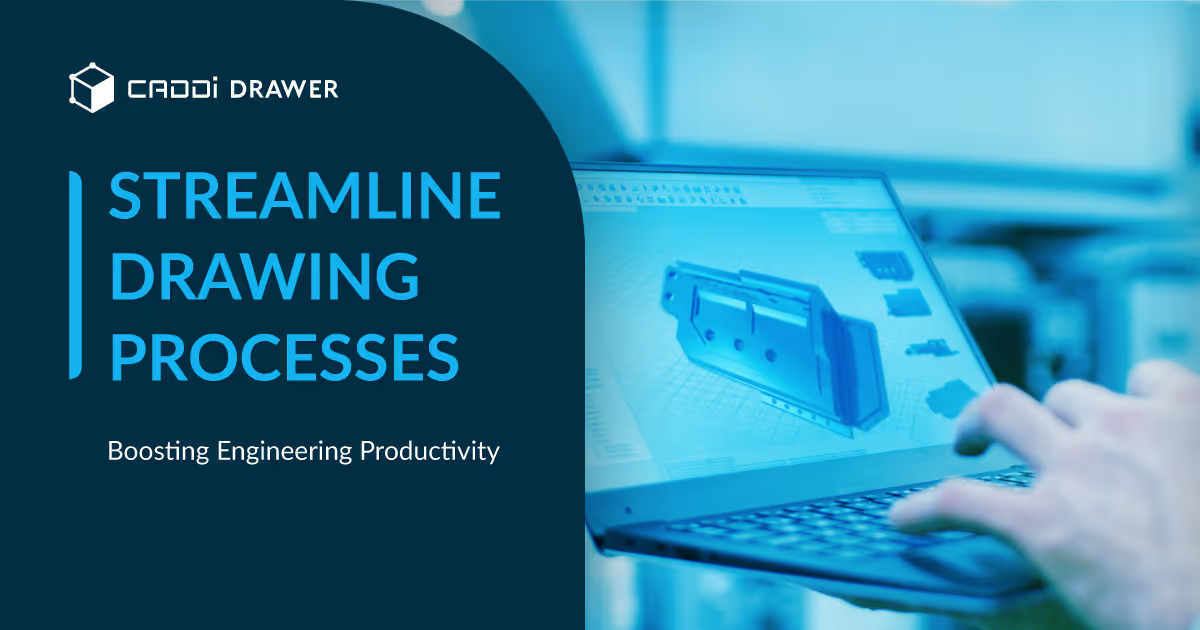

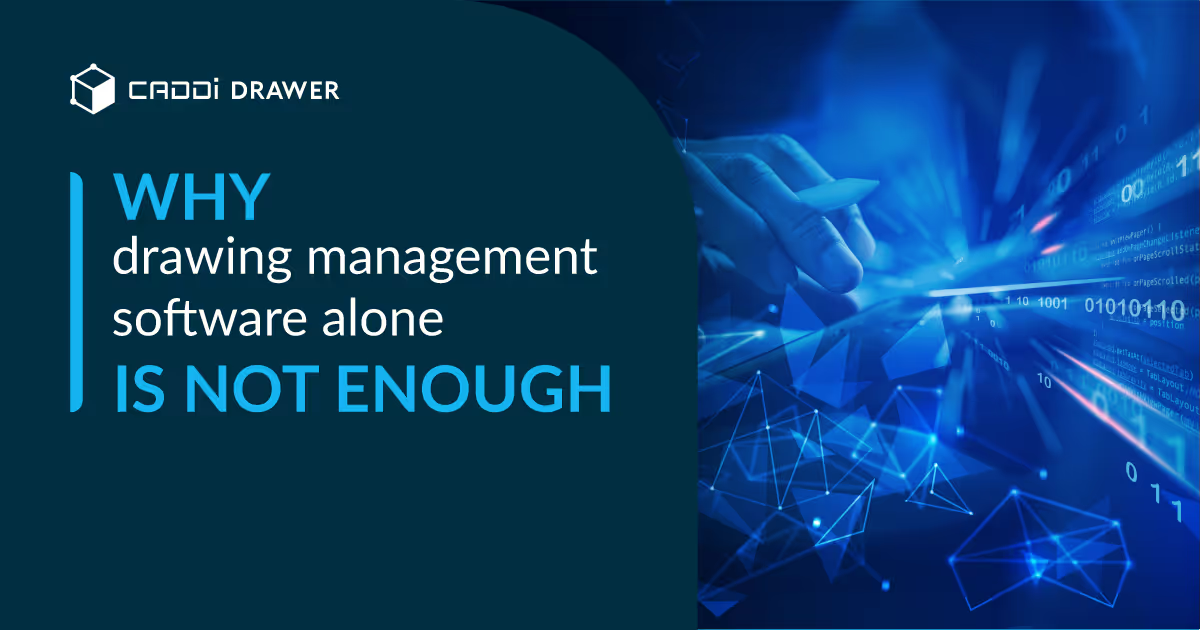



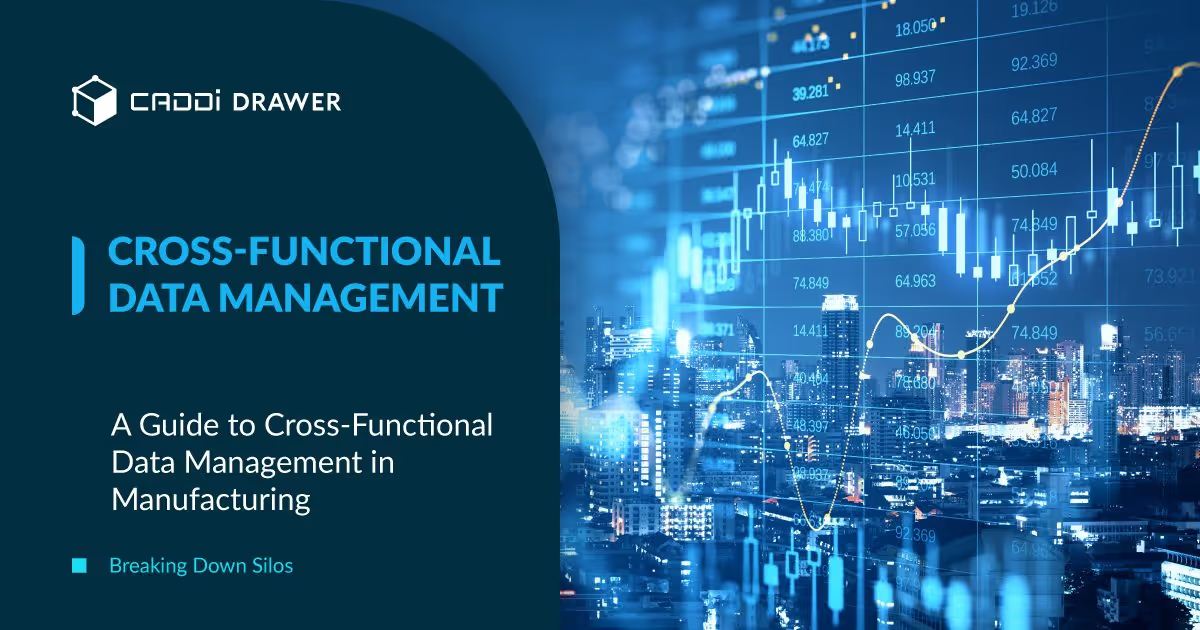



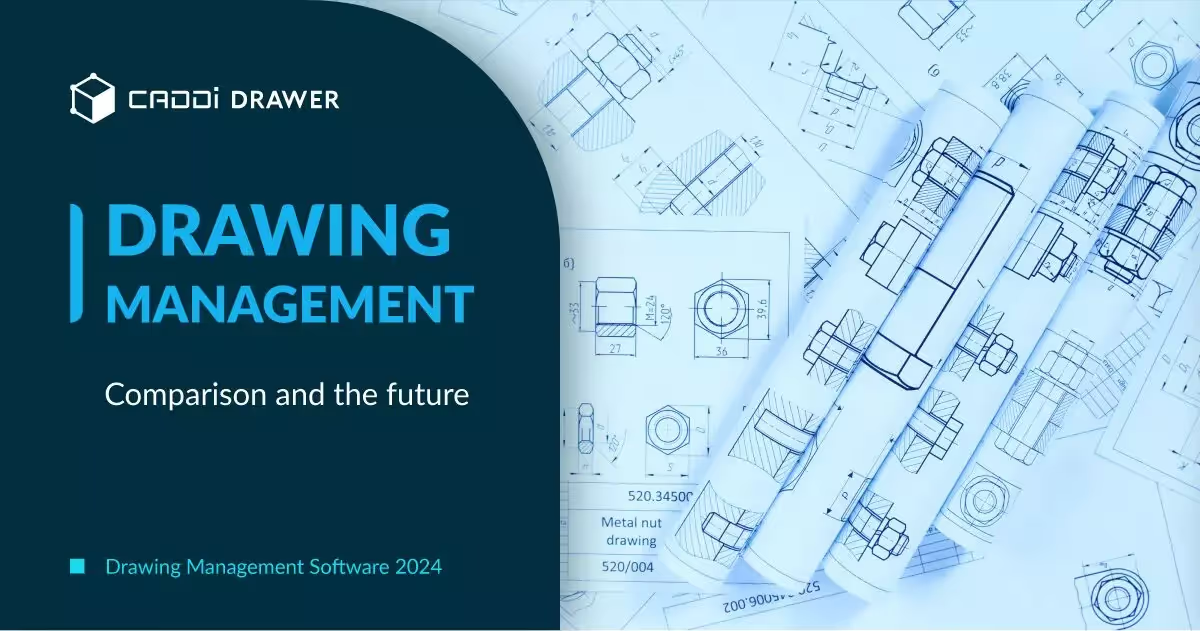

.svg)



.svg)
.svg)
.svg)


